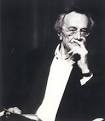Is the Semiosphere Post-Modernist? by George Rossolatos
Abstract This paper provides arguments for and against M.Lotman’s (2002) contention that Y.Lotman’s seminal concept of semiosphere is of post-modernist (post-structuralist; Posner 2011) orientation. A comparative reading of the …


